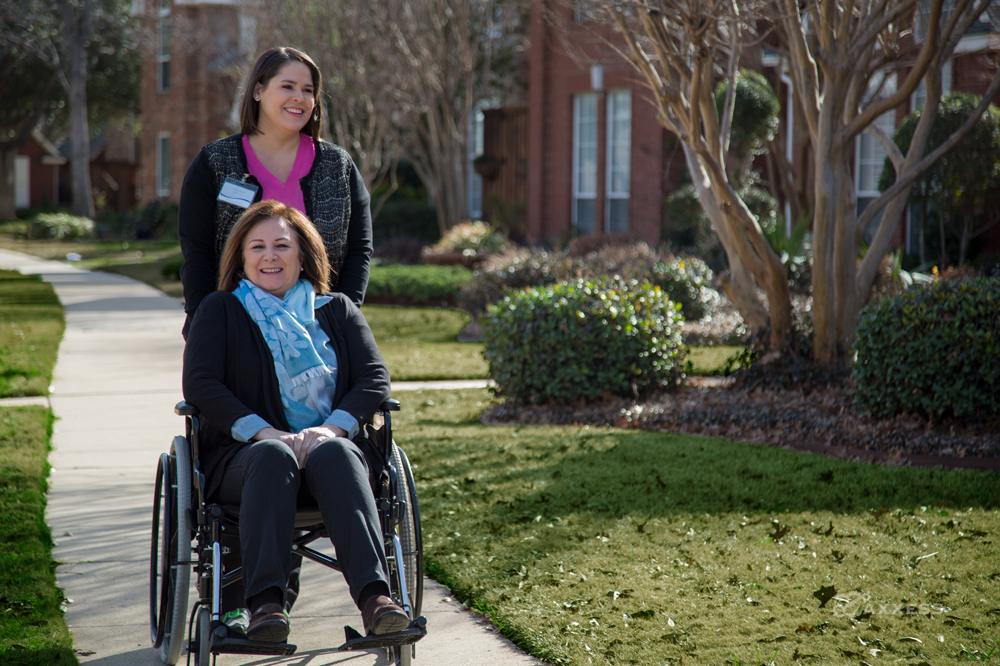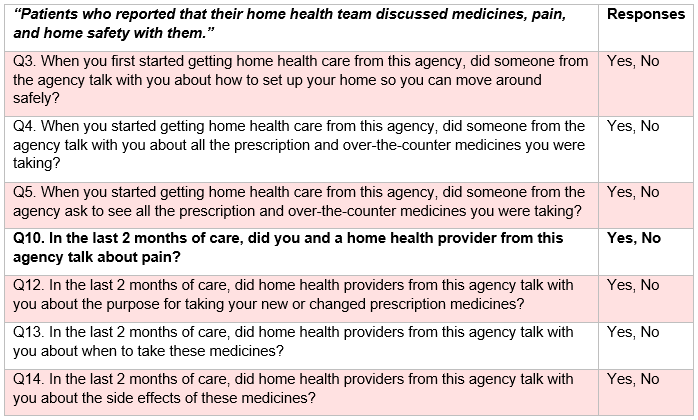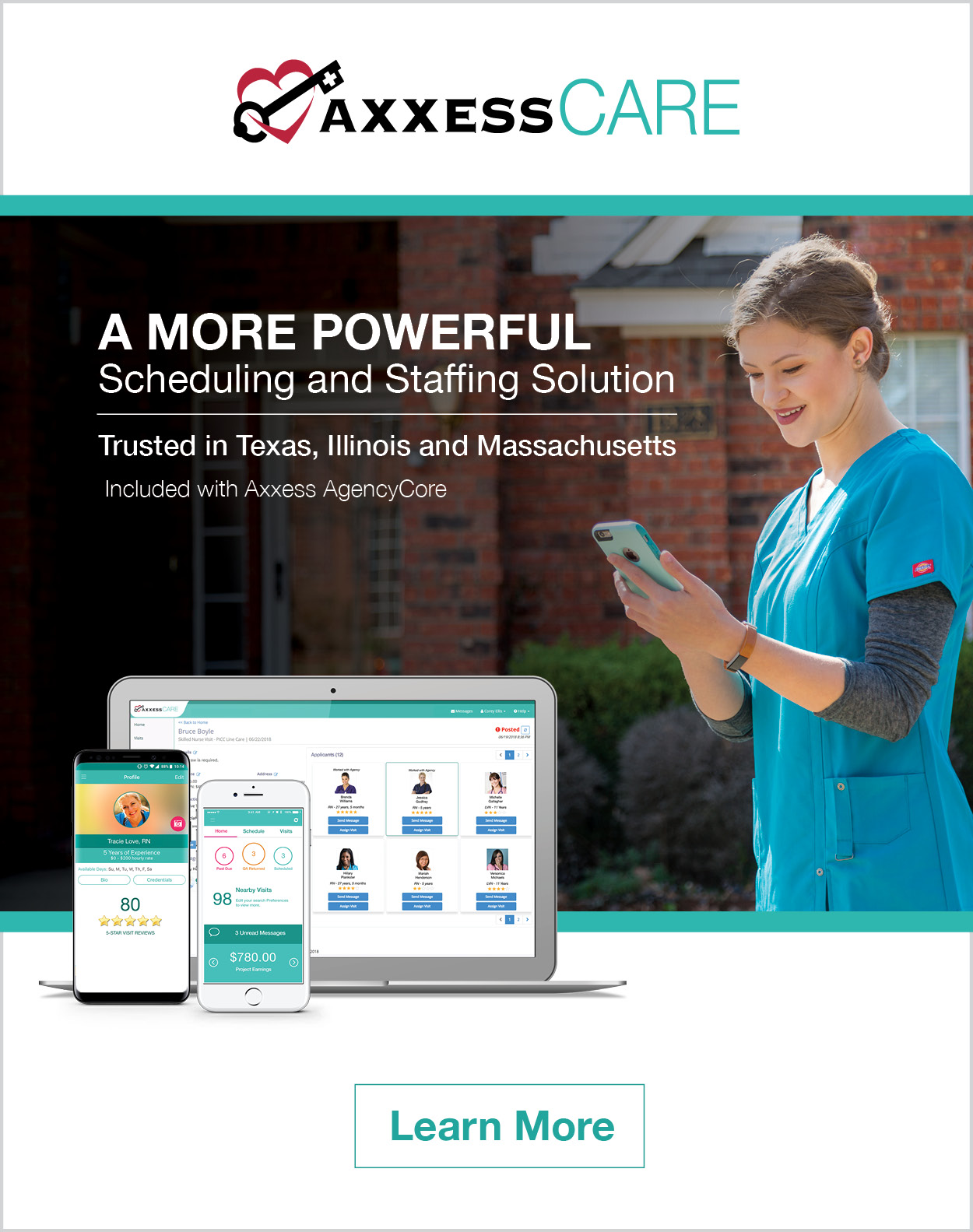
The Home Health Consumer Assessment of Healthcare Providers and Systems (HHCAHPS) patient engagement survey impacts the bottom line of home health agencies substantially, by attracting referral sources and value-based reimbursement. It is imperative for organizations to understand the HHCAHPS survey, and work on improving each measure to maximize long-term growth and sustainability.
Discussing Pain – Question 10
Question 10 is one of seven questions included in the Home Health CAHPS survey Specific Care Issues domain, designed to assess how effectively healthcare providers discuss medicines, pain, and home safety with patients.
Specific Care Issues

This question evaluates the patient’s perception of whether home health providers discussed pain with the patient throughout the care episode. Optimizing performance on this question relies on an organization’s ability to implement effective processes for assessing, discussing, and managing patients’ pain.
Suggestions for Improving Specific Care Issues Related to Pain
- Assess pain during admission and on subsequent visits, using established pain assessment protocols.
- Document all pain assessments and reassessments to continuously monitor how effectively pain is being controlled throughout care. Adjust pain treatment as needed.
- Administer follow-up phone calls to check on patients’ pain and ensure pain is well-controlled between visits.
Pain management is fundamental to providing adequate healthcare services, and particularly significant in home healthcare settings. Home healthcare agencies characteristically service mostly elderly patients (ages 65 years and older), a population that tends to be especially susceptible to experiencing pain. As stated in a recent study on pain management in elderly patients, “persistent pain is common in older adults and results in substantial morbidity.”
The study also reiterates collective findings in pain-related research, indicating that “pain presence is associated with worse health and those in pain may experience greater functional impairment, falls, depression, decreased appetite, impaired sleep, and social isolation compared with persons not in pain.
Moreover, the multidimensional impact of pain may leave older adults more vulnerable and less able to effectively respond to physiologic stressors, ultimately contributing to the development of frailty.” Further, the study states that, although pain can be successfully managed in most elderly patients, it remains largely undertreated throughout the healthcare industry.
Undertreatment of pain can damage the patient experience considerably, ultimately impacting home health agencies’ CAHPS survey performance and reputation in the healthcare industry. Several examples of factors that can contribute to the undertreatment of pain, as outlined in the pain management study, are listed below. Agencies should review and remain aware of these potential factors to ensure pain-related protocols address any impending issues.
Factors contributing to the undertreatment of pain in older patients:
Patient Factors:
- Pain resulting from a new or worsening disease process
- Prior experiences where patient-reported pain was dismissed by healthcare providers
- Fear of being considered weak, difficult, or labeled a complainer
- Aversion to opioid use due to perceptions of side effects and/or fear of addiction risk
- Fear of analgesics failing to control pain, especially when pain is severe
- Cultural and/or religious beliefs
Provider Factors:
- Lack of training in pain assessment and/or pain management
- Fear of litigation surrounding opioid use in pain management, and/or apprehension of state and federal initiatives scrutinizing providers who prescribe opioids
- Fear of patients experiencing negative side effects associated with opioids (e.g., increased fall risk, respiratory depression, impaired cognitive orientation, etc.), and potentially compromising patient safety and/or the patient experience
Check our blogs for the series on improving your agency’s HHCAHPS scores by systematically reviewing each of the HHCAHPS questions and sharing opportunities for improvement.

